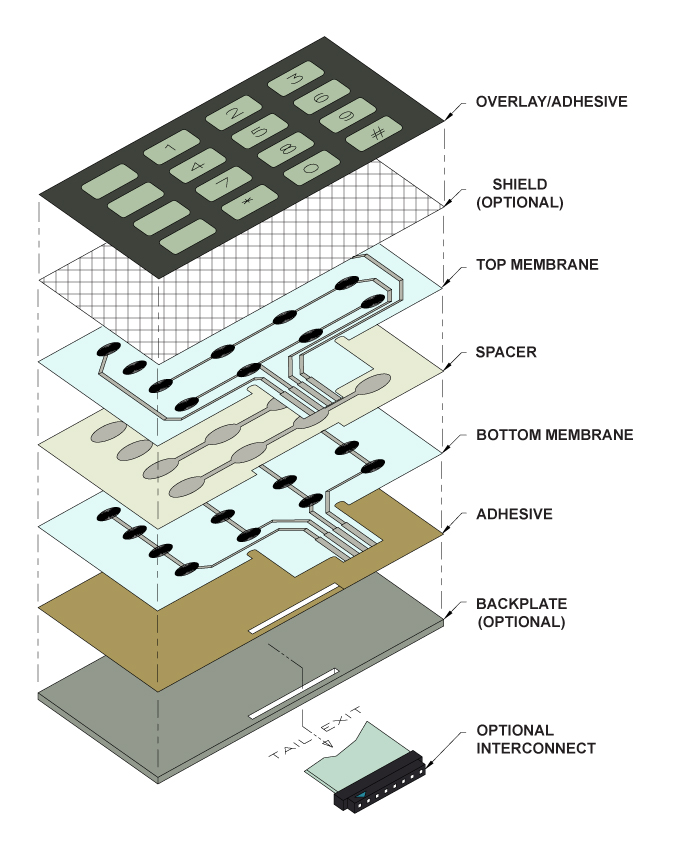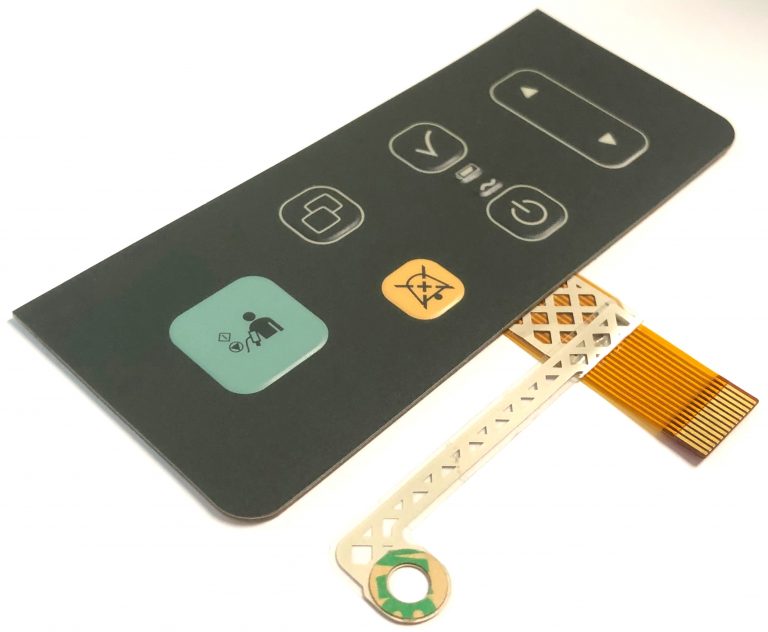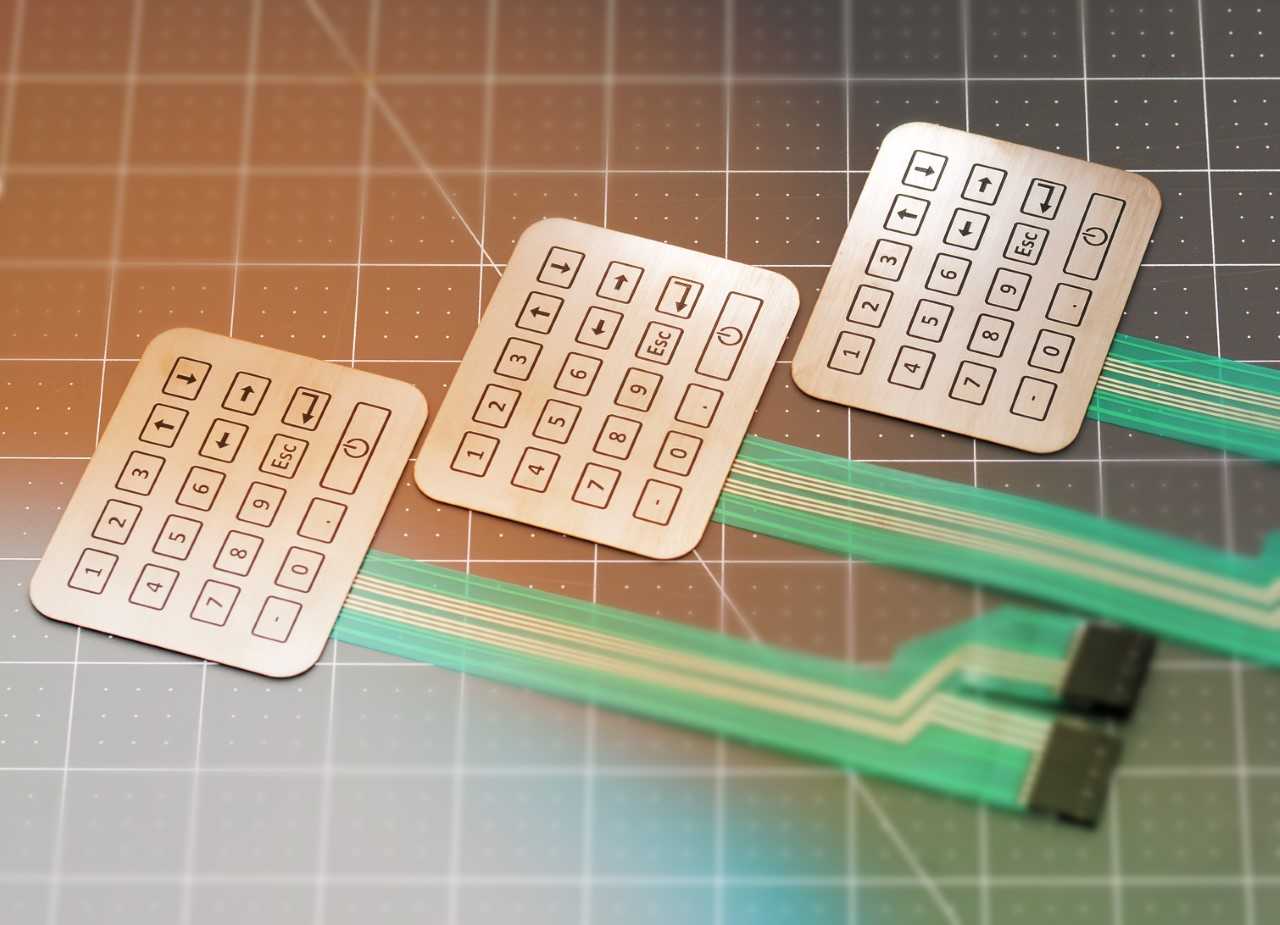Selecting the right membrane switch manufacturer can positively impact your product's quality.
Selecting the right membrane switch manufacturer can positively impact your product's quality.
Blog Article
Everything About Membrane Layer Switch: Understanding Its Layout and Capability
When you believe concerning the control user interfaces in modern devices, membrane buttons usually come to mind. Allow's explore what sets membrane switches over apart from various other control systems.
What Are Membrane Switches?

Their smooth nature makes them easy to tidy and immune to dirt and moisture, an important function in several settings. Membrane buttons can additionally be customized pertaining to shape, dimension, and graphics, allowing producers to develop special interfaces customized to specific products. Plus, they're light-weight and thin, which helps in reducing the total mass of tools. Overall, membrane switches play a significant function in improving customer experience across a vast range of applications.
Exactly How Membrane Switches Over Job
When you push a secret on a membrane button, it activates an uncomplicated yet reliable system. membrane switch manufacturer. The leading layer, usually made of flexible product, presses down onto a conductive layer beneath it.
You'll discover that the tactile responses varies based on the button layout, supplying either a soft click or a much more obvious action. Once you launch the trick, the membrane go back to its initial placement, reopening the circuit and quiting the signal. This procedure occurs almost instantaneously, making sure a receptive user experience.
Membrane buttons are popular because of their resilience and resistance to dirt and dampness, making them perfect for numerous applications, from house appliances to clinical tools. Comprehending this procedure assists you appreciate their extensive use.
Trick Elements of Membrane Buttons
Recognizing the key elements of membrane layer buttons is basic for realizing their performance and layout. At the core, you'll discover the visuals overlay, which supplies the visual user interface for customers. Underneath that, there's a spacer layer that separates the circuit layers, ensuring that they don't make contact till pressed. The circuit layer is where the magic happens; it contains conductive traces that complete the circuit when you press the button. One more essential component is the sticky support, allowing the switch to adhere to surfaces safely. The safety layer guards versus environmental variables and wear, prolonging the switch's lifespan. Each component plays a significant duty in guaranteeing reputable performance and user interaction. By recognizing these parts, you'll get understanding into exactly how membrane changes run and their value in various applications.
Products Made Use Of in Membrane Layer Change Layout
The efficiency and resilience of membrane layer switches heavily depend on the products utilized in their layout. You generally come across polyester and polycarbonate as key substratums as a result of their superb strength and adaptability. These materials withstand scratches and chemicals, making them optimal for requiring settings.
The conductive layers frequently utilize silver or carbon, chosen for their reliability and conductivity. membrane switch manufacturer. Silver offers remarkable efficiency, while carbon is a cost-efficient alternative. For the overlay, you may think about a matte or shiny surface, depending upon your visual requirements and customer experience
Adhesives play a crucial duty as well; they bond layers safely and ensure longevity. Make sure to select adhesives that stand up to environmental aspects like temperature level and moisture. Don't neglect the value of an excellent printing strategy for graphics, as it enhances both functionality and aesthetic allure. Picking the best products will assure your membrane switch stands the test of time.
Style Considerations for Membrane Switches
While making membrane layer buttons, it's essential to think about different variables that affect their functionality and customer experience. Beginning by focusing on the websites layout and button size; make certain they're intuitive and easy to browse. Consider the tactile responses you wish to supply-- will users need a recognizable click or a softer touch? Furthermore, assume about the products you'll utilize, as they'll influence durability and looks.
Validate your design fits environmental elements, like wetness or temperature level variations, which might influence performance. By thoroughly taking into consideration these components, you'll develop a membrane button that boosts functionality and fulfillment.
Applications of Membrane Switches
Membrane buttons are functional components found in different applications, from industrial equipment to consumer electronics. You'll see their influence in devices that require resilient user interfaces and in devices that benefit from sleek styles. Recognizing these applications assists Web Site you appreciate the functionality and functionality of membrane switches in daily technology.
Industrial Devices Use
When you're looking to boost the capability of commercial equipment, membrane layer switches offer a trustworthy solution that combines durability with straightforward layout. These switches are best for extreme environments, giving resistance to dust, dampness, and chemicals. You'll discover them in control panels for manufacturing makers, HVAC systems, and clinical tools, where precision and responsiveness are important. Their reduced profile implies they fit effortlessly into different tools, conserving valuable room while maintaining simplicity of usage. With customizable graphics and backlighting choices, you can develop an user-friendly user interface for drivers, improving effectiveness and safety and security. And also, their lengthy lifespan lowers maintenance expenses, making them a clever financial investment for your industrial applications. Welcome membrane layer switches to enhance your procedures and improve overall performance.
Customer Electronics Integration
In the domain of customer electronic devices, membrane switches play a vital function in improving customer interaction and gadget capability. Membrane layer switches additionally ensure toughness and resistance to dust and dampness, expanding the life-span of your electronic devices. By selecting membrane layer buttons, you improve not simply the capability yet likewise the see page design of your gadgets, making daily interactions smooth and enjoyable.
Benefits and Drawbacks of Membrane Layer Buttons
While membrane buttons provide a range of benefits, they also feature some disadvantages that you need to take into consideration. One considerable benefit is their compact design, making them ideal for space-constrained applications. They're likewise cost-efficient, offering a durable remedy with a reduced production cost. Additionally, their smooth surface area is easy to tidy, improving hygiene in settings like medical facilities.

Membrane switches can have a much shorter life expectancy compared to mechanical buttons, particularly under heavy use. They can also be less tactile, which could affect user responses throughout operation. Stabilizing these pros and disadvantages will certainly aid you determine if membrane buttons are the appropriate fit for your task.
Frequently Asked Questions
How Much Time Do Membrane Layer Changes Commonly Last?
Membrane layer switches commonly last between 5 to 10 years, depending on usage and ecological conditions. You'll intend to assess elements like wear, exposure to moisture, and temperature variations to determine their long life properly.
Can Membrane Layer Changes Be Personalized for Particular Designs?
Yes, you can customize membrane layer switches to fit certain styles (membrane switch manufacturer). You'll have the flexibility to pick colors, forms, and layouts that match your job's demands, ensuring they mix seamlessly with your total visual
What Is the Cost Variety for Membrane Layer Change Production?
The price variety for membrane layer button manufacturing generally drops in between $1 and $10 each, relying on aspects like layout complexity, quantity, and materials. You can obtain quotes from makers to find the most effective alternative.

Are Membrane Layer Switches Over Waterproof or Resistant?
Membrane buttons can be made to be waterproof or immune, depending on products used and building methods. If you require them for wet environments, ensure you define those requirements during the design process.
How Do Membrane Switches Compare to Conventional Buttons?
Membrane layer switches are usually thinner and much more adaptable than conventional switches, offering a sleek layout. They're typically much easier to cleanse and incorporate, however could not supply the responsive feedback you're made use of to with mechanical options.
Verdict

Report this page